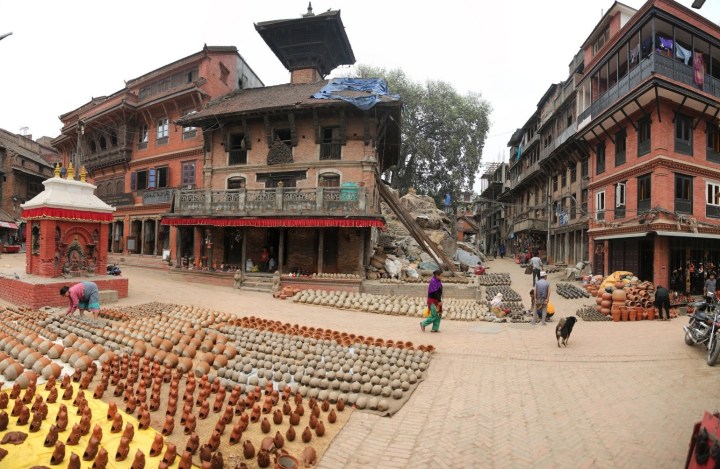Bhaktapur Pottery Square
Bhaktapur is famous for its traditional pottery industry. The age old craft has survived the calls for modernization and today it enhances Bhaktapur’ value as a city of Heritage. Bhaktapur has 2 famous pottery squares. One is located at the dark, damp alleys beckon on either side of the main road, the most promising destination in this area- Potter’s square, a sloping open space south west of Taumadhi Tol.

Walking towards Bolachhen/ Talakwa, better known as the town’s Potter’s square, the streets are lined with small shops selling innumerable items produced in baked clay and the pavements are filled with black clay items drying in the strong sunlight. Within the Talakwa pottery square, 2 important temples of a solid- brick Vishnu temple and the double roofed Jeth Ganesh can be seen in a very traditional way. On the northern side of the square a small hillock is topped by a Ganesh shrine and a Shady papal tree.Like potters all over Nepal, the men of Bhaktapur employ primitive techniques. The heavy old wooden wheels have been for the most part replaced by weighted truck tyres which spin faster. Guided by skilled hands, the cones of wet black mud are shaped and smoothed into yoghurt bowls, washbasins, giant grain storage jars and tiny oil lamps. With the exception of the planting and harvesting season, the potters of Bhaktapur are always busy shaping the natural clay into any imaginable shape. The craftsmen have passed this technique down from generation to generation and even today, the majority uses traditional techniques.
The next potter’s square is located at Suryamadhi. Walking around potter’s square, it becomes clear that the piggy bank must be the most popular item produced here. In less visited areas, Suryamadhi, south of Dattatraya Square, potters are occupied making the traditional bowls for the famous local curd, ‘Juju Dhau’. All around the square, pots lined up in symmetric patterns dry in the sun, waiting for a final firing in temporary kilns of heaped straw.

